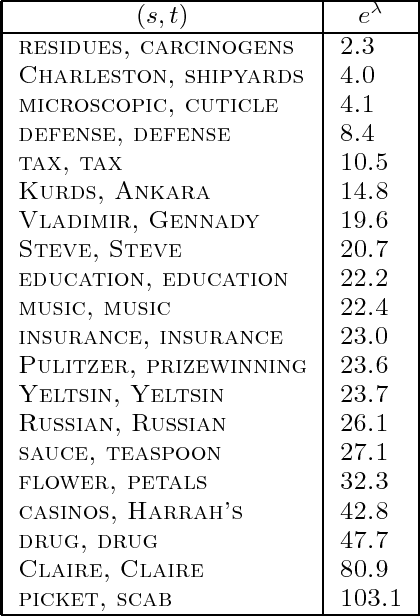Adam Berger
Carnegie Mellon
A Model of Lexical Attraction and Repulsion
Jun 16, 1997
Abstract:This paper introduces new methods based on exponential families for modeling the correlations between words in text and speech. While previous work assumed the effects of word co-occurrence statistics to be constant over a window of several hundred words, we show that their influence is nonstationary on a much smaller time scale. Empirical data drawn from English and Japanese text, as well as conversational speech, reveals that the ``attraction'' between words decays exponentially, while stylistic and syntactic contraints create a ``repulsion'' between words that discourages close co-occurrence. We show that these characteristics are well described by simple mixture models based on two-stage exponential distributions which can be trained using the EM algorithm. The resulting distance distributions can then be incorporated as penalizing features in an exponential language model.
Text Segmentation Using Exponential Models
Jun 13, 1997



Abstract:This paper introduces a new statistical approach to partitioning text automatically into coherent segments. Our approach enlists both short-range and long-range language models to help it sniff out likely sites of topic changes in text. To aid its search, the system consults a set of simple lexical hints it has learned to associate with the presence of boundaries through inspection of a large corpus of annotated data. We also propose a new probabilistically motivated error metric for use by the natural language processing and information retrieval communities, intended to supersede precision and recall for appraising segmentation algorithms. Qualitative assessment of our algorithm as well as evaluation using this new metric demonstrate the effectiveness of our approach in two very different domains, Wall Street Journal articles and the TDT Corpus, a collection of newswire articles and broadcast news transcripts.
 Add to Chrome
Add to Chrome Add to Firefox
Add to Firefox Add to Edge
Add to Edge